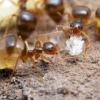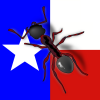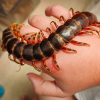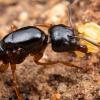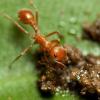Hi all,
Went out looking for Formica queens today, and happily came back with three queens of another species, Pogonomyrmex Barbatus. After creating basic test tube set ups for them, I realized they're semi-claustral! So, I went looking for some information... I read through this old thread, which was really helpful for food choices and temperature/humidity information. BUT, I still have a few questions, and thought it would be inappropriate to resurrect a zombie thread...
I'm not super prepared to house semi-claustral species. What is a simple, at home way to care for these guys? Would it be ok to make a (sterilized) native soil "dirt box" situation inside a pickle jar/mason jar? I'd likely punch a hole in the lid, and stuff some cotton in there for good measure. But, I noticed these guys can't really climb glass, so I'd feel pretty safe without a barrier.
What do these guys want for enrichment? I noticed the exterior of their natural nest is essentially a giant pile of pea gravel. If I make small formicariums out of jars and dirt, should I mix in some (sterilized) gravel as well? Or just put a layer on top? Is there anything else they like to build with?
It seems like they want to go pretty deep when they dig their initial nest, at least from the looks of Dspdrew's various Pogonomyrmex journals. Is there any "official" info on their preferred depth?
How many workers can I expect by hibernation time this year? What about next year? (Just to gauge how much space they'll need!)
Big thanks to anyone who can offer advice!





